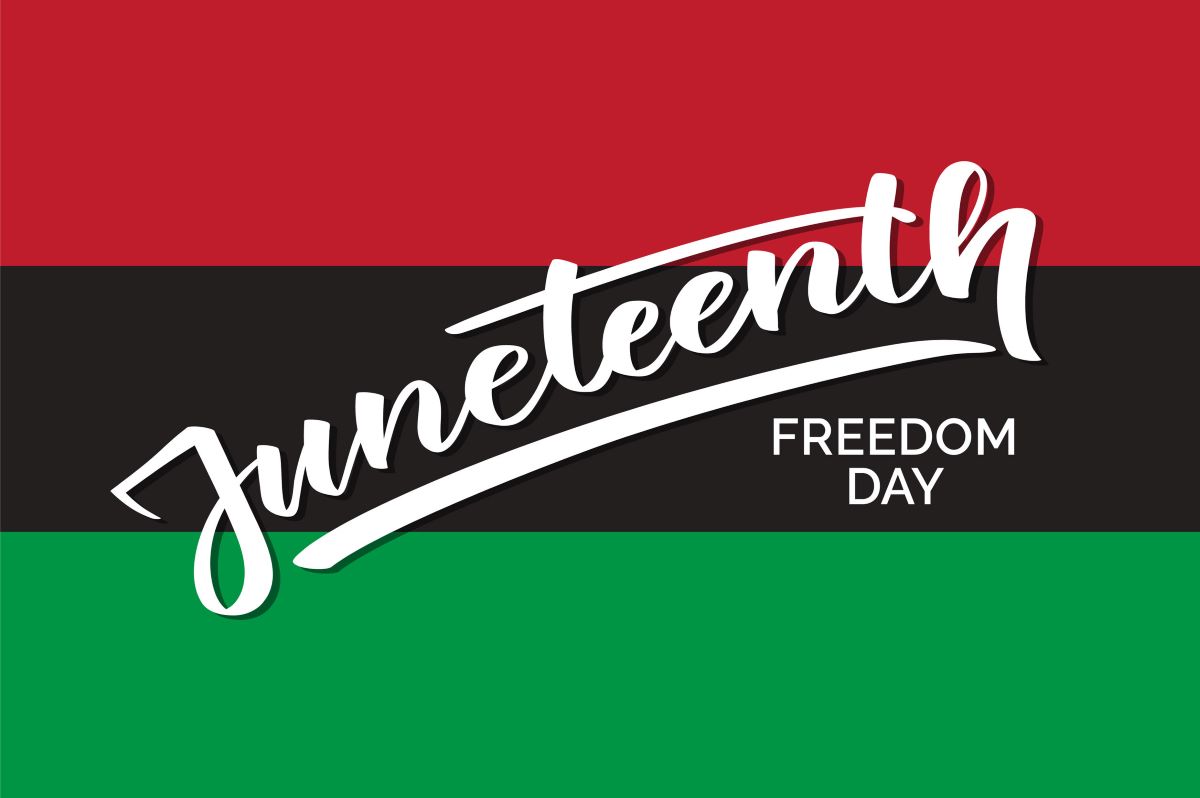Curating the week in wellness June 14–18, 2021: Observing Juneteenth, supporting women’s mental health, and more
The week’s essential content and fresh industry pickings for those dedicated to employee well-being.

Greetings, wellness, HR and comms pros.
We hope you enjoy this week’s collection of thought-provoking articles, savvy tips and takeaways.
As always, please get in touch with any ideas, suggestions or feedback on how we can serve you better. We are grateful for all the excellent work you do, so please keep it up!
1. Observing Juneteenth with authenticity and respect.
How is your workplace observing Juneteenth (June 19) this year?
As USA Today notes, this year’s holiday should come into sharper focus on the heels of our ongoing racial reckoning—and it’s an ideal time for reflection on how well your organization is treating employees of color:
“In addition to celebrations, Juneteenth is also a time for reflection and conversation. You can listen to dialogue centered around race and equality and contribute to the conversation in a positive way. Supporting Black-owned businesses, listening to Black artists, reading books written by Black poets and authors, and donating to organizations are other ways to celebrate Juneteenth.”
However you decide to observe the holiday, proceed with caution. And maybe don’t use the historic day as a vehicle to sell cargo shorts? Old Navy already halted a Juneteenth campaign after receiving backlash, and surely there will be more messaging misfires.
Regardless, use the occasion to take stock of your company’s DE&I efforts. Are you doing enough? How and where can you improve?
2. Five ways to support women’s mental health.
HBR offers helpful tips on how companies can offers substantive shows of support to the heroic women in their midst. The guidance includes:
- Make mental health a priority, and make sure senior leaders back up talk with action.
- Reevaluate workplace norms.
- Enhance mental health support for women.
- Communicate what resources and programs are available.
- Measure progress and outcomes.
HBR writes:
“Above all, act. The lines between work and personal life are vanishing. To have a positive impact on women’s mental wellness at work, employers must be strategic, equitable, and proactive. This commitment will require innovation and transformation of processes, policies, and systems. Mental wellness in the workplace isn’t something that will be achieved overnight, but companies’ collective embrace of workforce mental health as a core business priority is the starting point needed to create a better working culture — and a more inclusive economy — for everyone.”
3. Ensuring LGBT inclusion in your benefits.
Employee Benefits News shares how Morgan Stanley is making its benefits more inclusive.
EBN writes, “Instead of assuming a benefit is one-size-fits-all, it’s important to look at the different segments of a company’s employee population and make sure a benefits presentation is speaking to each community.”
It adds:
“‘People do not see how financial wellness intersects so heavily with diversity, equity and inclusion,’ Barker says. ‘You want to bring in diverse talent, you want to increase productivity, and you want to help create a more inclusive work environment. You can actually do that through a financial wellness program that has a diversity, equity and inclusion lens.’”
“Ensuring that all employees feel seen and valued is a delicate balancing act, and no employer may ever get this completely right, Barker says. But any step forward is an important signal to help staff feel supported and take advantage of the benefits being offered.”
4. Pursuing genuine wellness that actually helps employees.
Business Insider says to go beyond “fruit and pilates” and make a positive difference in workers’ lives:
· Health and productivity can and must co-exist.
· Lifestyle evangelism is no substitute for decent work.
· Context is everything.
· Employers: Beware of ‘fool’s gold.’
5. Navigating your return-to-work phase.
Benefits Pro lists steps to streamline your transition back to work, including:
- Survey your team to gather everyone’s feedback, opinions and preferences.
- Focus on flexibility.
- Prepare for reentry.
- Follow up, and frequently check in.
6. Tackling workplace burnout.
The Conversation offers science-backed tactics to address stress and worker burnout. The guidance includes:
“For meaningful change, organizations must first implement clear policies reflecting their commitment to workplace mental health and psychological safety, and appoint a wellness champion and leaders who model these values.”
“The next step is identifying workplace hazards through employee engagement surveys, workplace risk assessments, incident investigations, exit interviews and disability claim data if available. Identifying controls to prevent psychological harm is also necessary.”
Washington Post offers more helpful reporting on the topic here.
7. Delight employees with ‘pop-up holidays.
The BBC reports on the rise of spontaneous days off, which can be a bulwark against burnout.
An excerpt:
“In recent months, a swath of businesses, both large and small, have taken similar actions, offering employees ‘self-care’ days on top of regular paid time off. In April, LinkedIn shut down for a week, giving nearly all 16,000 of their global employees five days off. Since last summer, Google has given workers two impromptu paid holidays. And back in November 2020, Ryan Wuerch, CEO of cash-back app Dosh, started granting employees impromptu long weekends. The Wall Street Journal reported, ‘On some Thursdays, during all-staff meetings, Mr. Wuerch now surprises the company with the news that the following day is a ‘Dosh Day,’ when no work is allowed.’”
8. The latest vaccine incentive guidance.
Bloomberg breaks down the latest rules issued by EEOC, explaining:
“The U.S. Equal Employment Opportunity Commission guidance on whether incentives can be offered to encourage worker Covid-19 vaccinations raised as many questions as it answered, leaving employers to grapple with what perks might violate the law.
The workplace civil rights agency updated its guidance last month to clarify that employers that don’t administer the vaccination themselves may offer incentives, and those providing the vaccine can do the same—so long as the incentive isn’t ‘so substantial as to be coercive.’
But what qualifies as coercive remains an open question. Employers have offered benefits ranging from one-time payments to paid time off to encourage an increase in worker vaccination rates, and states are more generally offering cash lottery prizes.”







